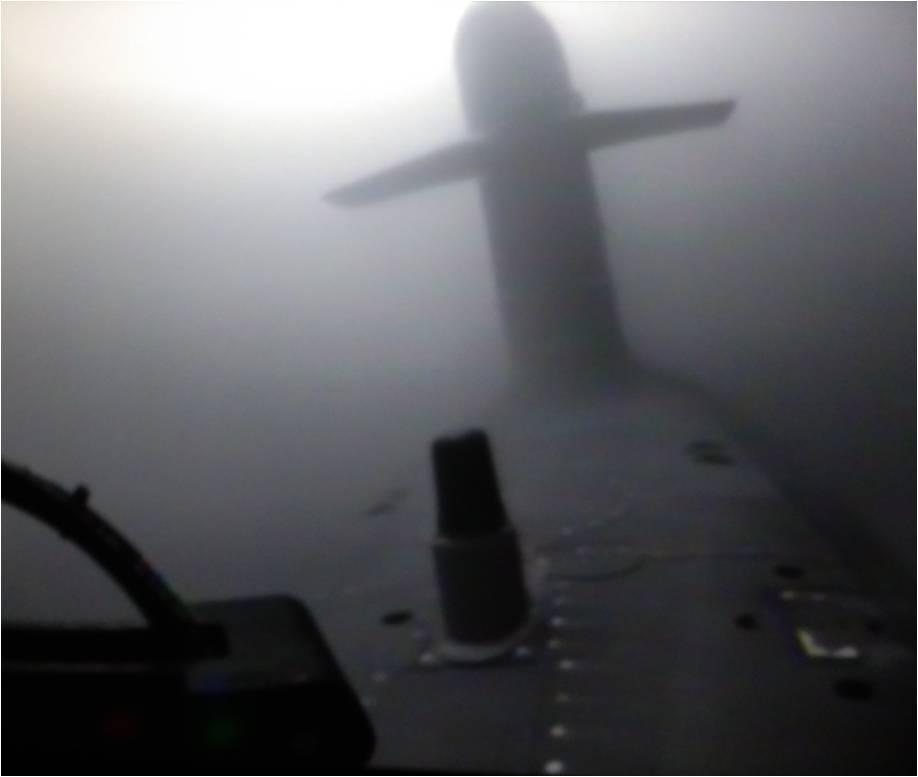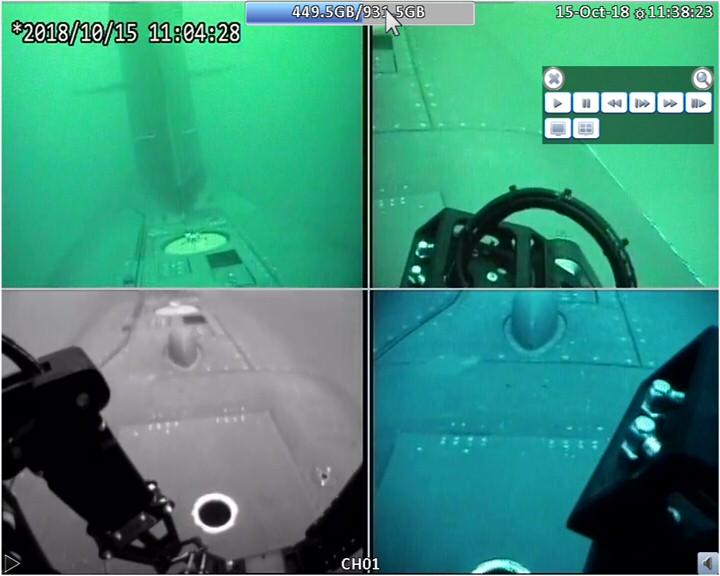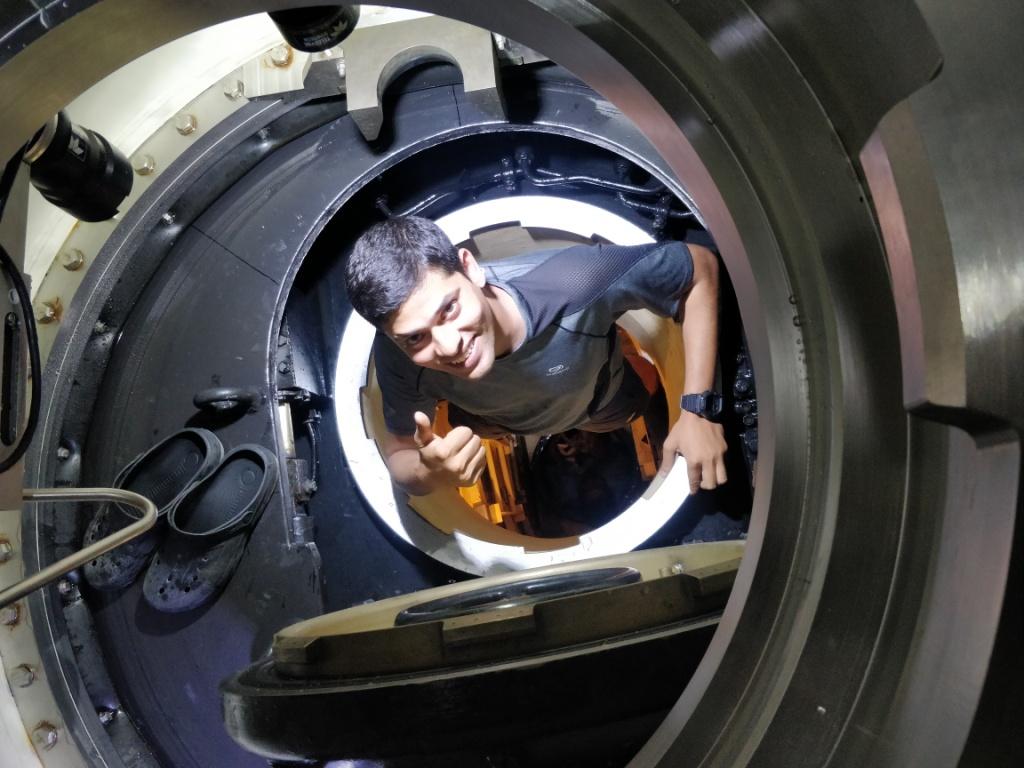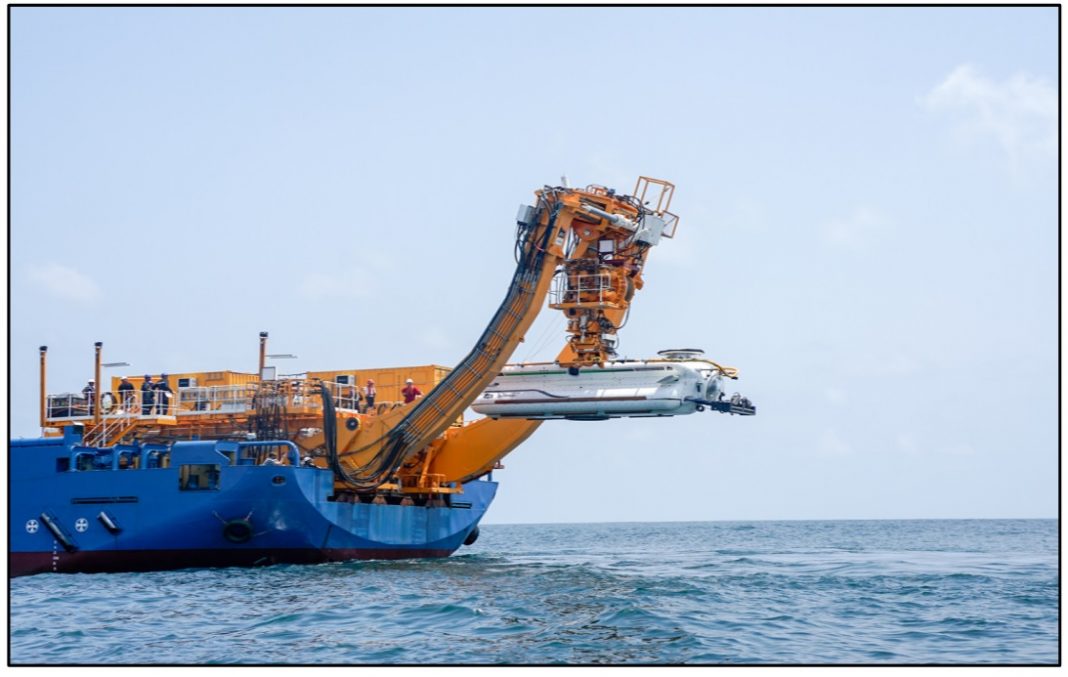The Indian Navy’s (IN’s) Western Naval Command (WNC) has successfully concluded the maiden trials of the first Deep Submergence Rescue Vehicle (DSRV) imported in April 2018, thereby providing the service with a new niche capability in the arena of submarine rescue.
On October 15, 2018, the WNC’s new DSRV successfully carried out an underwater mating operation with a bottomed submarine at a depth in excess of 300 feet depth. On successful mating, both the DSRV and the submarine opened their hatches, thereby facilitating the transfer of personnel from the submarine to the DSRV. These sea trials have proven the newly inducted DSRV’s ability to undertake rescue operations from disabled submarines at sea and has provided the IN with a critical new capability.

Image: Visual from the October 2018 trials. Source: Indian Navy
During the trials the DSRV dived successfully to a depth of 666 metres (m). This is a record for deep diving by a ‘manned vessel’ in Indian waters. The DSRV crew has also carried out remotely operated vehicle (ROV) operations at depths in excess of 750 m and side scan sonar operations at a depth of over 650 metres, all of which are ‘firsts’ for the IN.

Image: More visuals from the underwater mating operation. Source: Indian Navy
The ongoing trials will also include air transportation of the system by the Indian Air Force’s (IAF’s) heavy-lift transport aircraft. Completion of the trials will put the IN in a small league of world navies that have integral submarine rescue capability.
Salient features of the DSRVs
The DSRV, which is operated by a crew of three, can rescue 14 personnel from a disabled submarine at a time.

Image: Crew transfer underway after the successful mating operation. Source: Indian Navy
Contract for procurement of two sets of non-tethered DSRV, capable of effecting submarine rescue up to depths of around 650 meters was concluded with the United Kingdom’s James Fisher Defence in March 2016. The first DSRV was delivered to Mumbai in April 2018 (as mentioned above) and the second DSRV is slated to be delivered to Vishakhapatnam by the end of 2018. These DSRVs will also be used for underwater inspection, testing or salvage, and recovery of objects/ship aircraft lost at sea.
Contract for Diving Support Vessels that will host DSRVs
Undertaking Search and Rescue (SAR) operations for imperiled submarine crew, obviously requires extensive diving support and for that the availability of suitably equipped platforms that can also host DSRVs cannot be understated. As such the IN signed a contract with Defence Shipyard Hindustan Shipyard Limited, Vishakhapatnam in September 2018 for the construction of two Diving Support Vessels (DSV) to augment the IN’s submarine support operations on either coast. The first vessel to be built over a 36 month period would be followed by a second in a matter of six months. The vessels are to be based at Vishakhapatnam and Mumbai respectively. Each DSV will be 118 m long and will displace approximately 7,650 tonnes.

The IN believes that the induction of DSVs equipped with DSRVs, would go a long way in enhancing the capability and reach of its submarine rescue operations in the Indian Ocean Region.
© Delhi Defence Review. Reproducing this content in full without permission is prohibited.
































